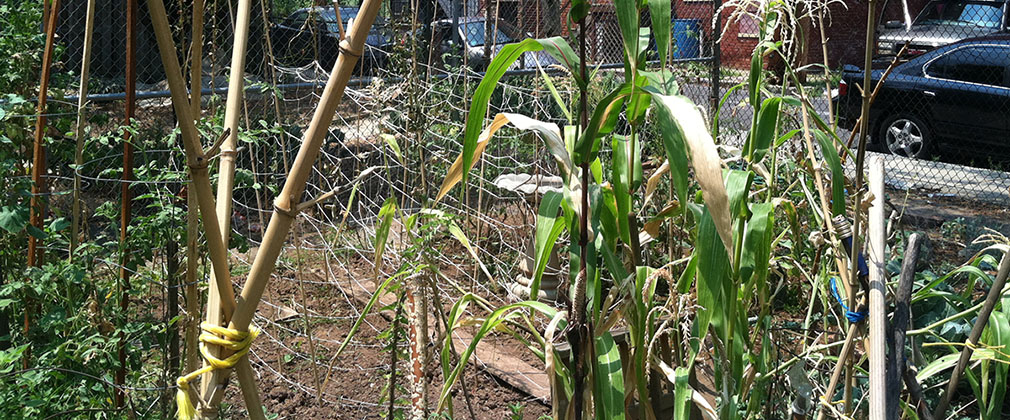Urban Gardening: Balancing Risks and Benefits
Since moving to Baltimore seven years ago, I’ve become enamored with the idea of growing food in urban spaces.
Turns out there are good reasons to get behind the idea. Studies have found associations between urban community gardening and increased access to healthy food, opportunities for exercise, stronger social cohesion in neighborhoods, and even higher property values. And like any green space, urban farms and gardens offer essential ecosystem services like moderating temperatures and reducing storm water runoff. Perhaps most importantly, for many of Baltimore’s youth, getting their hands in the soil may be their only regular communion with nature.
For all its benefits, growing food in urban settings can pose health risks. Like many cities, Baltimore has a history of industrial activity. Factories, busy roads, waste dumps, demolition sites, building fires, and even dry cleaning operations can leave behind a legacy of contaminated soil.
Gardeners may be unaware of soil contaminant risks and how to manage them. (Check out these resources for urban growers.) I am an author on a recent study aimed at investigating what urban community gardeners know (and don’t know) about soil contaminants, and what their concerns are.
I’m of the sort that gets jazzed about dung beetles, soil fungi, and the role of soldier fly larvae in composting manure. I will talk with you about soil until compost comes out your ears, but I’d rather focus my energies on cultivating fertile soil than worry about the bad stuff that might be in it. With such a cornucopia of benefits associated with growing food in urban settings, why not focus on promoting the positives, rather than drawing attention to the risks? When I was first invited to join the study team, part of me worried about deterring people from participating in one of my most beloved pastimes—or worse yet, sullying the reputation of urban-grown fruits and vegetables.
Weighing risks and benefits is a balancing act. You want people to be aware of the risks, so they know to investigate their site history, get their soil tested, and take steps to minimize exposure to potential contaminants. You also want them to keep enjoying the benefits of growing food in urban settings, as long as they are doing so safely.
We’ve been using our study findings to inform city agencies, gardening leaders, local non-profits and other groups working to promote safe gardening practices. Baltimore’s Office of Sustainability, for example, is developing a policy that would require permanent urban farms and gardens to submit a soil safety plan and have it approved. Meanwhile, in a parallel process, the Baltimore Farm Alliance is finalizing rigorous standards for soil-testing that apply to all of its members. I look at it this way: these collective efforts are promoting safety, not generating fear. Safety is sexy, after all, and it never hurts to give urban-grown fruits and vegetables a little extra sex appeal.
Photo: Jared Margulies, Boyd Street Garden, Southwest Baltimore, 2013.
